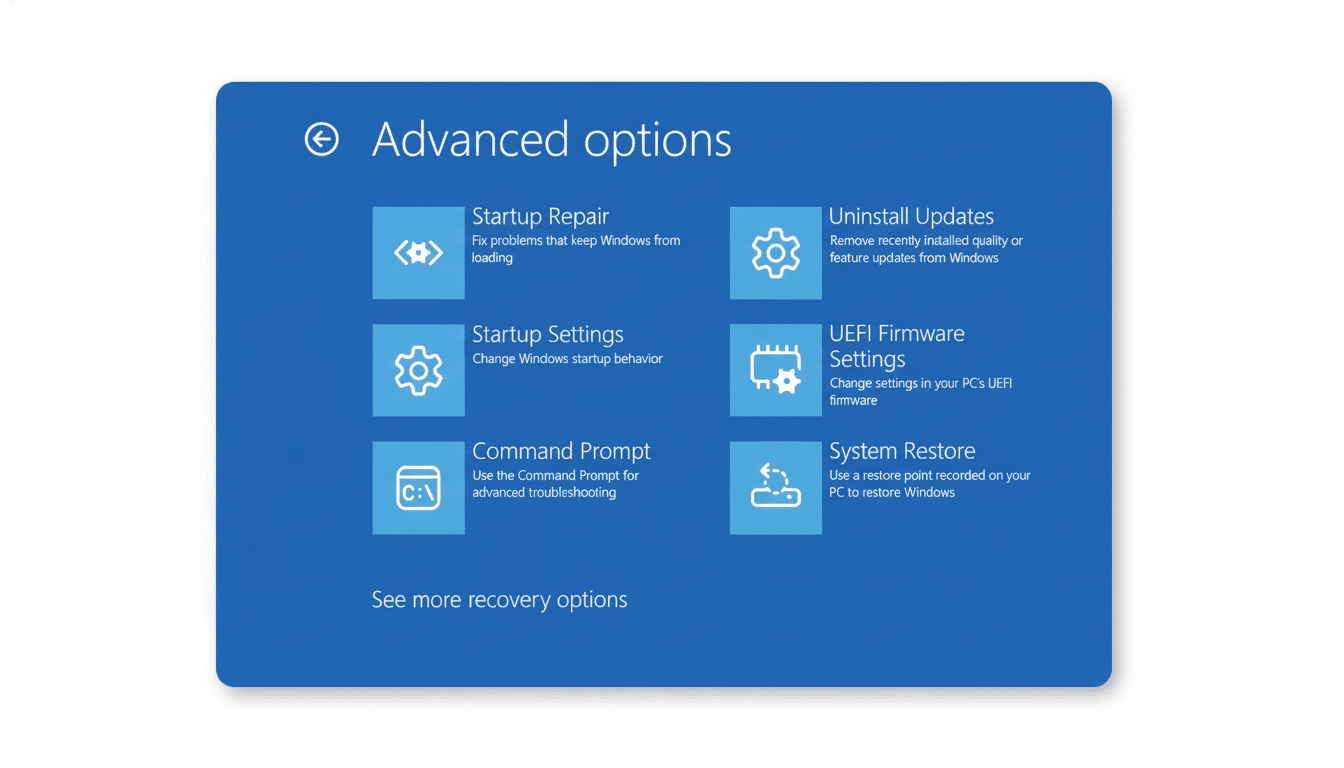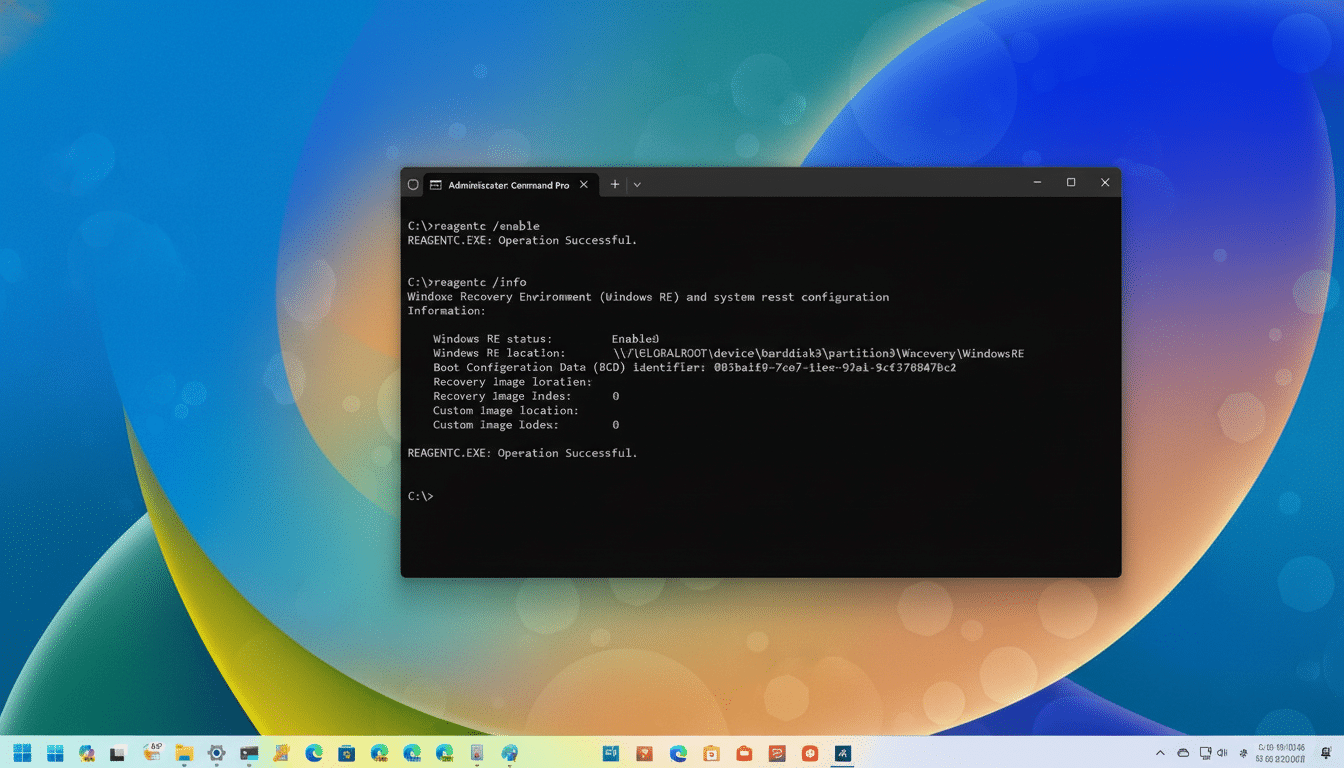A common Windows 11 bug is preventing the keyboard and mouse from functioning in the Windows Recovery Environment, effectively turning off PCs when they need help. The issue is caused by the latest October security rollup. Microsoft says it can disable USB input devices in WinRE on certain systems. While the OS still recognizes USB peripherals as usual, in recovery mode, you may find yourself unable to click or type to select any option.
According to Microsoft’s HID class, after applying the October security rollup, USB keyboards and mice “stop working when exclusive use is required due to the restriction of privileged context” in WinRE. It is a minimal environment suitable for Boot Repair, System Recovery, updating when Windows isn’t running, and other essential troubleshooting. Since the recovery menus depend on input, losing USB support effectively blocks you from using the tools.

It isn’t necessarily a whole device shutdown: until Windows 11 boots, USB drivers are operating normally. The damage occurs at the recovery level since it employs a different group of drivers and boots via a different path than the standard desktop. As a result, the problem has been confirmed in Windows 11 24H2 and 25H2, as well as Windows Server 2025.
Why this Windows Recovery input issue matters now
WinRE is often your last line of defense when a PC refuses to boot or you need to roll back a problematic update. If you can’t navigate recovery options, however, actions like Startup Repair, Safe Mode, and System Restore are all unavailable to you.
That risk is magnified this month because the October Patch Tuesday included fixes for more than 170 vulnerabilities, according to Microsoft’s Security Update Guide. Security updates are only effective when deployed promptly, and this snag makes life more difficult for people who depend on WinRE as a safety net.
Workarounds you can use right now to access WinRE
- Use a PS/2 keyboard or mouse if your hardware supports it. The bug targets only USB input, so legacy PS/2 devices will continue to work in WinRE. A round PS/2 port is still prevalent on many desktops, and inexpensive USB-to-PS/2 adapters that support true PS/2 signaling are available, though not all adapters are created equal.
- Boot from Windows installation media to access repair tools. Several admins say that booting from a Windows 11 installation USB drive loads a separate recovery environment, and USB input works successfully there. To do this, choose “Repair your computer” from the installer and then use its Startup Repair, System Restore, or Command Prompt. This alternative circumvents the WinRE instance saved on disk, which is now flawed.
- Uninstall the October update from inside Windows if you can still boot normally. This restores input in WinRE on the affected machines, but it rolls back the previous month’s security improvements, so do not neglect to apply the update once Microsoft releases a corrected edition.
- Use a recovery drive made before the update. If you have a Windows recovery USB you made previously, you should try it; the older media should load the drivers that still understand USB input.
Advice for IT and fleet managers during this issue
Please temporarily block KB5066835 for Windows 11 24H2 and 25H2 devices with business-critical WinRE access. If your organization uses Windows Update for Business, WSUS, or management tools like Microsoft Intune, you can stop or delay this patch on a per-device basis and update other endpoints.

Stage alternative recovery paths. Turn Windows installation media into installers and test installation boot media. Verify that your out-of-band management, i.e., BMC/iKVM, can emulate PS/2 input. Also, ensure that you and your users have easy access to BitLocker recovery keys because, when rebooting in WinRE, devices may ask for the unlock key. If it does, that unlock key becomes a recovery key, and without USB input, what should be a routine unlock becomes a blowout downtime event.
Monitor Microsoft’s release health dashboard for a fixed build. Known Issue Rollback is often used for non-security issues, but it requires a revised update or servicing stack change. Microsoft will post updates in this pipeline.
Other October issues to watch after this update
In addition to the WinRE input issue, Microsoft has discovered an error that IIS websites on affected PCs may be unable to load when hosted locally. The affected operating systems are Windows 11 24H2 and 25H2 and Windows Server 2025, and a solution is in the works.
Furthermore, user accounts reported by Microsoft-focused websites suggest that File Explorer’s preview pane presents some cloud- or network-awareness with unduly harsh alerts. Although preview pane concerns are not included, establishments will want to investigate user assistance calls in case they pertain to these warnings.
Bottom line and next steps for affected Windows users
If you utilize WinRE, be cautious with this month’s update until Microsoft issues a repaired version. For the time being, PS/2 inputs, Windows installation media, and selective update removals are temporary alternatives. The security updates in KB5066835 are significant; hence, don’t roll back unless you can utilize alternatives. Rely on Microsoft to fix this shortcoming soon — in the meantime, ensure you have a reliable recovery strategy that doesn’t depend on USB connectivity within WinRE.

